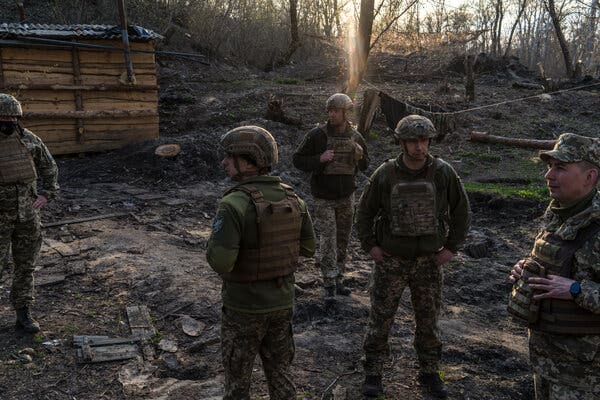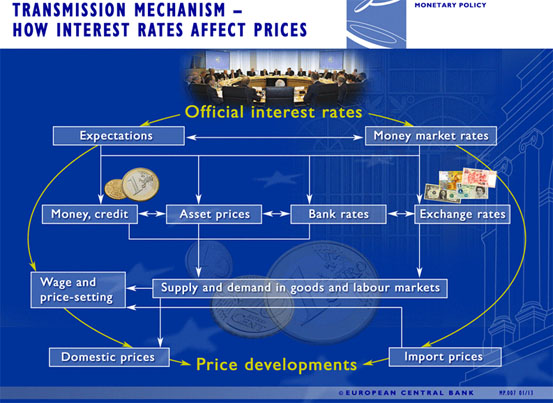Russia's Military Buildup: What It Means For Europe

Table of Contents
Modernization of Russia's Armed Forces
Russia's military modernization program is a multifaceted effort aimed at enhancing its conventional and nuclear capabilities. This significant investment in military technology and personnel represents a substantial shift in the regional balance of power.
Nuclear Weapons Modernization
Russia's advancements in nuclear weapons technology are a major component of its military buildup. This includes the development of new delivery systems and an increase in stockpiles, raising concerns about nuclear proliferation and the potential for escalation.
- New ICBMs: The deployment of new intercontinental ballistic missiles (ICBMs), such as the RS-28 Sarmat, significantly expands Russia's nuclear strike capability and range.
- Modernization of SLBMs: Upgrades to submarine-launched ballistic missiles (SLBMs) enhance Russia's second-strike capability, making its nuclear arsenal more resilient to attack.
- Development of Hypersonic Weapons: Russia's development and deployment of hypersonic weapons, such as the Avangard, present a significant challenge to existing missile defense systems.
The implications of this modernization are profound. It increases Russia's nuclear deterrence capabilities, potentially triggering an arms race and undermining existing arms control treaties like New START. NATO's response includes increased investment in its own missile defense systems and a renewed focus on nuclear deterrence strategies.
Conventional Forces Enhancement
Beyond nuclear weapons, Russia is significantly enhancing its conventional military forces. This includes substantial increases in troop numbers, the modernization of existing equipment, and the acquisition of new weaponry across all branches of the armed forces.
- Increased Troop Numbers: Russia has increased the size and readiness of its army, providing it with a larger ground force for potential interventions.
- Modernization of Tanks and Armored Vehicles: Upgrades to tanks like the T-90M and the development of new armored vehicles improve the Russian army's combat effectiveness.
- Upgrades to Air Defense Systems: Improvements to air defense systems, such as the S-400 and S-500, enhance Russia's ability to defend its territory and project power.
- Expansion of Naval Capabilities: The construction of new submarines, frigates, and other naval vessels strengthens Russia's naval presence, particularly in the Black Sea and Arctic regions.
These enhancements significantly increase Russia's regional power projection capabilities, enabling it to potentially exert greater influence over neighboring countries and engage in more ambitious military interventions.
Geopolitical Implications for Europe
Russia's military buildup has significant geopolitical implications for Europe, impacting regional stability, NATO strategies, and energy security.
Increased Tensions in Eastern Europe
The military buildup has fueled increased tensions in Eastern Europe, particularly along Russia's borders with NATO members. This heightened tension stems from increased military exercises near borders, the potential for further incursions, and heightened diplomatic tensions.
- Increased Military Exercises: Frequent and large-scale military exercises near NATO borders demonstrate Russia's military capabilities and its willingness to project power.
- Potential for Further Incursions: The history of Russian military interventions in neighboring countries raises concerns about the potential for future incursions.
- Heightened Diplomatic Tensions: The buildup has exacerbated diplomatic relations between Russia and its neighbors, creating an atmosphere of distrust and suspicion.
This instability creates a significant security challenge for NATO and its Eastern flank members, requiring increased vigilance and defense spending.
Impact on NATO Strategy
Russia's military buildup has profoundly impacted NATO's defense strategies and military deployments. The alliance has responded with increased troop deployments in Eastern Europe, enhanced military exercises, and strengthened alliances.
- Increased Troop Deployments in Eastern Europe: NATO has significantly increased its military presence in Eastern Europe to deter potential Russian aggression.
- Enhanced Military Exercises: More frequent and larger-scale military exercises demonstrate NATO's resolve and its commitment to collective defense.
- Strengthened Alliances: The buildup has reinforced the importance of transatlantic alliances and strengthened cooperation among NATO members.
The changing dynamics of NATO-Russia relations underscore the need for continued vigilance and proactive defense strategies.
Energy Security Concerns
Russia's military actions and power projection are inextricably linked to its energy leverage over Europe. The potential use of energy supplies as a geopolitical weapon poses significant risks to European energy security.
- Potential Use of Energy Supplies as a Geopolitical Weapon: Russia's control over significant energy resources provides it with leverage to exert political pressure.
- Impact on European Energy Security Strategies: European countries are seeking to diversify their energy sources to reduce their dependence on Russia.
- Diversification Efforts by European Nations: The drive to diversify energy supplies includes investments in renewable energy, alternative pipelines, and liquefied natural gas (LNG) imports.
This dependence highlights the vulnerability of European nations reliant on Russian energy and the necessity for robust energy security strategies.
Economic and Social Costs of the Buildup
Russia's massive military buildup carries significant economic and social costs, both internally and internationally.
Economic Burden on Russia
The substantial investment in military modernization places a considerable burden on the Russian economy. This prioritization of military spending over other essential sectors has significant implications for long-term economic growth.
- Impact on Other Sectors of the Russian Economy: The diversion of resources to the military sector limits investment in other vital areas, such as healthcare, education, and infrastructure.
- Potential for Reduced Social Spending: Prioritizing military spending may lead to cuts in social programs, potentially impacting the quality of life for Russian citizens.
- Implications for Long-Term Economic Growth: The substantial military spending may hinder long-term economic growth and limit opportunities for diversification.
These economic trade-offs highlight the opportunity costs of prioritizing military expansion.
Impact on International Relations
Russia's military activities have strained relations with the West and impacted international security organizations, increasing the potential for further conflict and undermining global stability.
- Strained Relations with the West: Russia's military actions have led to increased sanctions and diplomatic tensions with Western countries.
- Impact on International Security Organizations: Russia's actions have challenged the norms and principles of international security organizations, such as the UN and OSCE.
- Potential for Further Conflict: The ongoing military buildup increases the risk of escalation and accidental conflict, jeopardizing global peace and security.
International condemnation of Russia's actions underscores the need for diplomatic solutions and mechanisms to de-escalate tensions and promote stability.
Conclusion
Russia's ongoing military buildup poses a significant and multifaceted threat to European security. The modernization of its nuclear and conventional forces, combined with aggressive geopolitical maneuvering, creates an environment of heightened tension and instability. Understanding the scope and implications of Russia's military buildup is crucial for formulating effective responses and ensuring European security. Further research and monitoring of Russia's military activities are essential to mitigate potential risks and strengthen regional stability. Stay informed on the latest developments regarding Russia's military buildup to remain proactive in safeguarding European interests.

Featured Posts
-
 Saudi Wealth Fund Suspends Pw C Advisory Services For A Year
Apr 29, 2025
Saudi Wealth Fund Suspends Pw C Advisory Services For A Year
Apr 29, 2025 -
 Bank Of Canadas Monetary Policy Rosenberg Sounds The Alarm
Apr 29, 2025
Bank Of Canadas Monetary Policy Rosenberg Sounds The Alarm
Apr 29, 2025 -
 Paralympian Sam Ruddock Missing A Las Vegas Mystery
Apr 29, 2025
Paralympian Sam Ruddock Missing A Las Vegas Mystery
Apr 29, 2025 -
 Harvard University And The Trump Administration A Legal Battle Over Federal Funding
Apr 29, 2025
Harvard University And The Trump Administration A Legal Battle Over Federal Funding
Apr 29, 2025 -
 Louisville Mail Delivery Delays A Union Leaders Report
Apr 29, 2025
Louisville Mail Delivery Delays A Union Leaders Report
Apr 29, 2025
